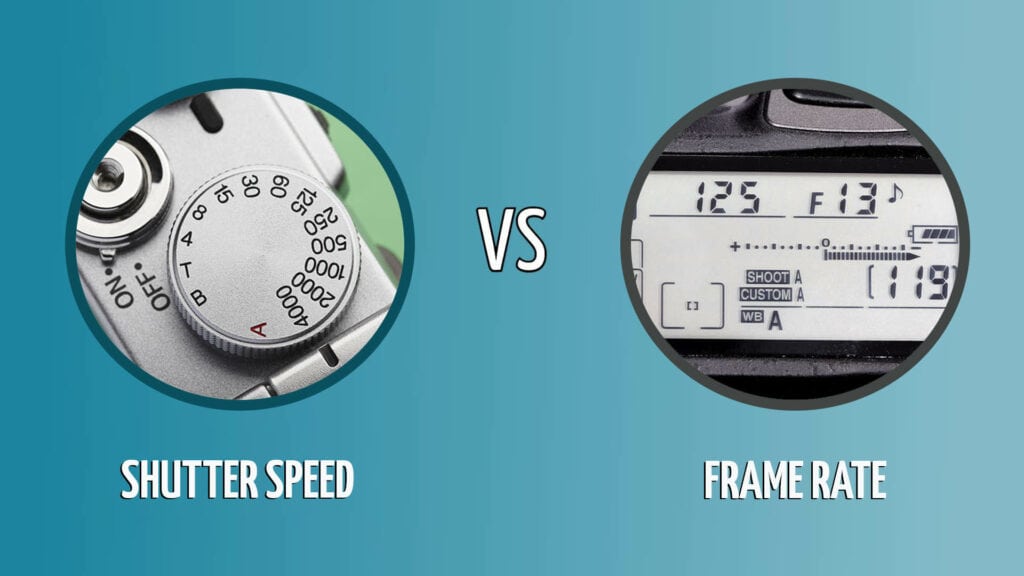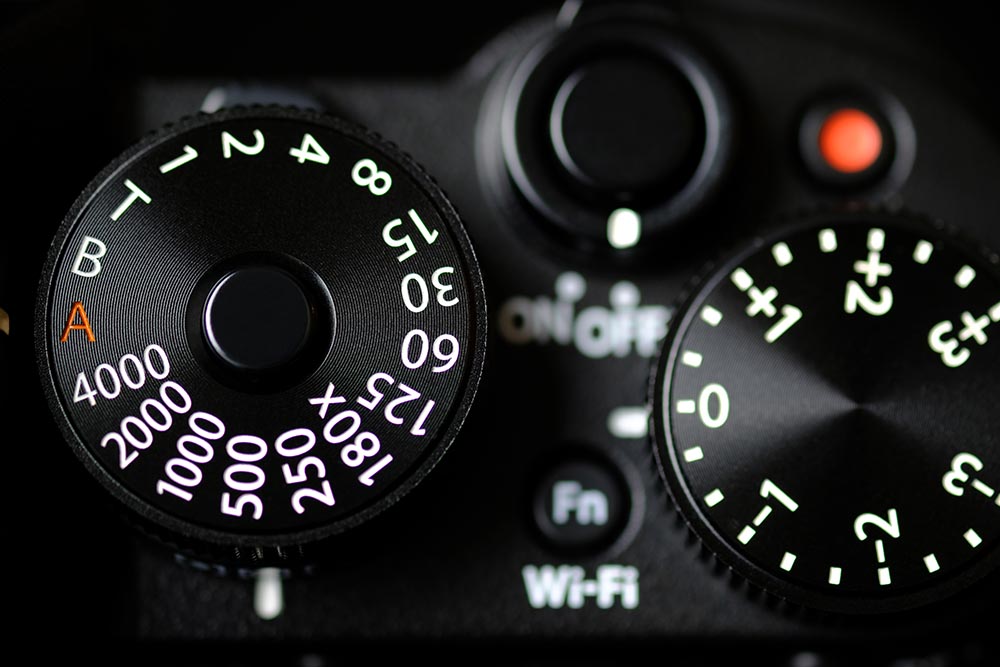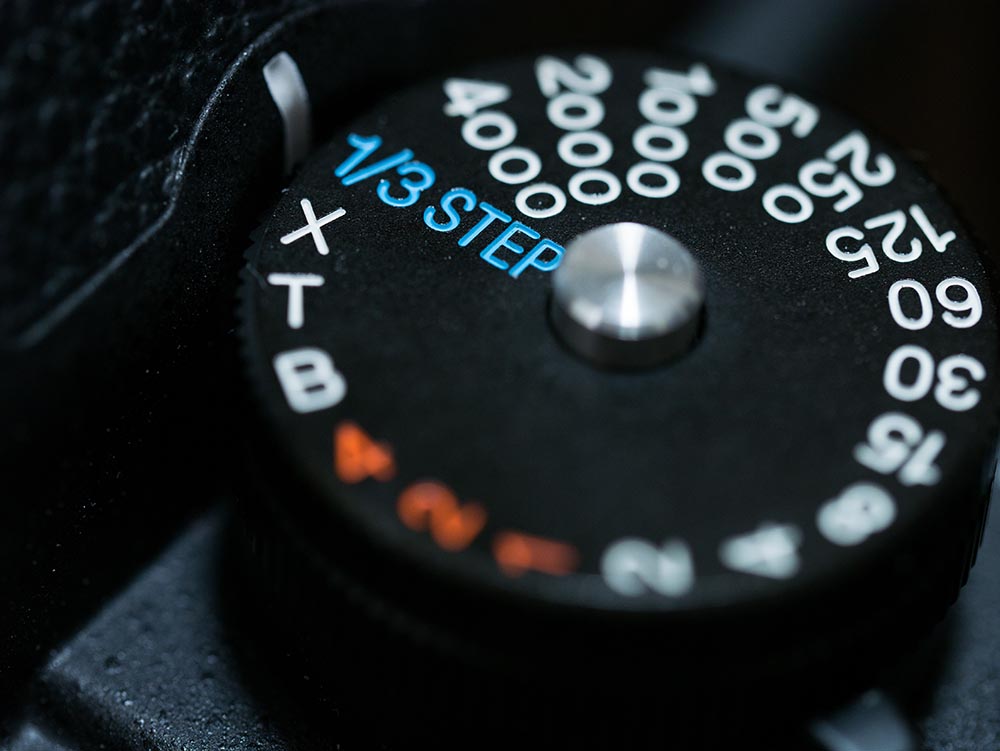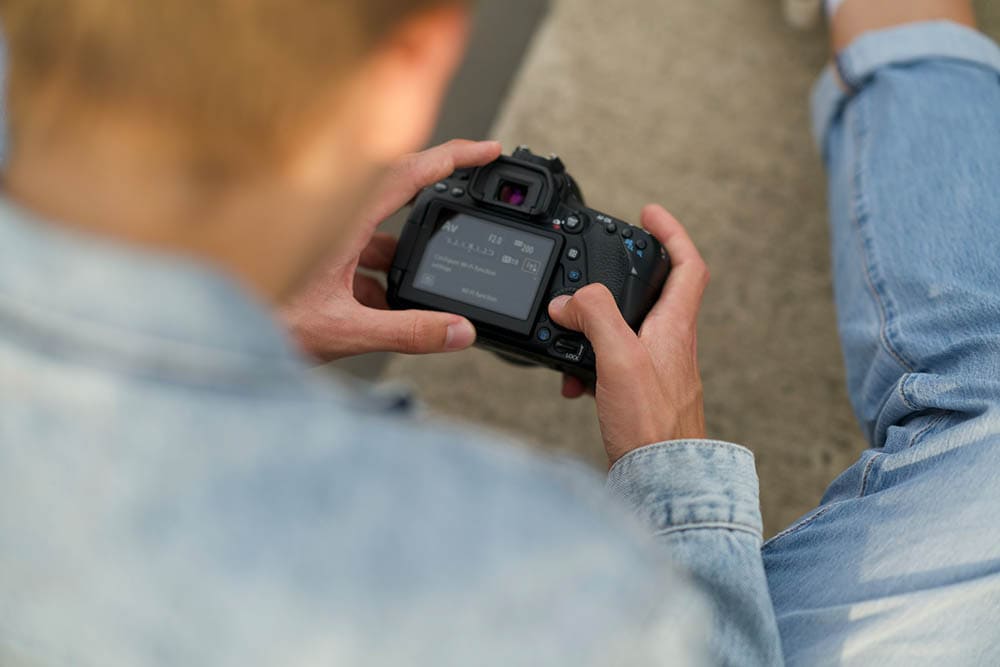Shutter Speed vs Frame Rate: Pros, Cons, & Difference
Last Updated on

Video production has a lot of jargon and plenty of numbers to track that affect your outcome. Worse yet, some cameras only have a number, not anything to qualify it, making it even more difficult to distinguish between them.
If you’re new, terms like “shutter speed” and “frame rate” can be confusing, and it doesn’t help that these settings have a big impact on your final product.
Fortunately, though often confused, these two terms are closely related. You can learn more about each setting and how you can use them to select the right equipment and produce a better video.

Overview of Shutter Speed
Shutter speed is the amount of time that each individual frame is exposed. With video, shutter speed is typically measured in fractions of a second. For example, if you have a shutter speed of 60, each frame is exposed for 1/60th of a second.

How It Works
Shutter speed offers small pieces of time. A faster shutter speed offers more of a slice of a moment, whereas a slow shutter speed allows more light and exposes a shot better.
What It’s Good For
When you’re adjusting shutter speed, you have to consider both light and motion. If the shutter is left open longer to capture more light, the motion can impact the picture and become blurry. In addition, leaving the shutter open for a long time doesn’t allow you to move the camera at all, which is virtually impossible.
Conversely, a fast shutter speed keeps the lens open for a shorter period of time, so less light gets in. This works well for motion, but it makes shots in low-light conditions challenging. If you don’t have the lighting set up correctly, you could have photos that are too dark.
But when you don’t want motion blur, which is an effect caused by the subject or camera moving during the slow shutter speed shot, you can use a fast shutter speed to capture it effectively.

How to Choose Shutter Speed
The type of photo you want to take is what will determine your shutter speed. Manipulating the shutter speed is how you can create artistic shots or shots that tell a story with your ability to use motion, or freeze it, to capture the atmosphere. Technical knowledge is necessary, but it really comes down to practical knowledge and experience until you find the combination that works best.
- Versatility to create artistic shots
- Requires technical and practical knowledge
- Trade off for light versus motion

Overview of Frame Rate
The frame rate is how many frames per second your camera is recording, as the name suggests. A video is actually still images moving quickly enough to create the perception of motion, not an actual moving image. Because our eyes take in information at a specific pace, the video and the rate at which the frame is playing are important. If it’s slower than the pace of your eyes, it will look choppy. If it’s faster, you won’t be able to register all of it.

Different Frame Rates
For context, a traditional movie film is shot at 24 frames per second (FPS). That’s not the only frame rate, however. Other frame rates you may encounter are 23.976 (commonly 24), true 24, 24 (or PAL in Europe and Asia), 29.97 (or 30 FPS), and true 30. Other options include 48, the infamous frame rate for “The Hobbit,” and 59.94 (or 60 FPS), which is used for realistic slow motion.
What It’s Good For
Frame rate plays a crucial role in the quality of the video and the viewing experience for the audience. Choosing the best frame rate depends on many factors, including the kind of video you’re making, the playback speed for the video, and the mood and emotion you want to convey. Generally, the higher the amount of motion, the higher your frame speed should be, but this can be influenced by many different factors. Ultimately, this is where experience and trial and error come into play with perfecting videography.
- Creating the perception of motion
- Options for different styles
- Influenced by multiple factors
- Learned through experience

Shutter Speed vs Frame Rate
The rule of thumb for shutter speed vs. frame rate is that you want a shutter speed that’s about double the frames per second you’re using. For example, if you’re recording at 30 frames per second, you want a shutter speed of 1/60th of a second. This is known as shooting at a 180-degree shutter angle, which gives you a normal motion blur. If you go above or below that, the final product may look odd.

Conclusion
Shutter speed vs. frame rate is basic knowledge for filmmaking. If you’re a beginner or self-taught, these basics may help you develop more technical videography skills. Then, once you know the rules, you can take some artistic license to play with the shutter speed and frame rate to produce interesting shots.
Featured Image Credit: (L) Gang Liu, Shutterstock | (R) Thomas M Perkins, Shutterstock
About the Author Robert Sparks
Robert’s obsession with all things optical started early in life, when his optician father would bring home prototypes for Robert to play with. Nowadays, Robert is dedicated to helping others find the right optics for their needs. His hobbies include astronomy, astrophysics, and model building. Originally from Newark, NJ, he resides in Santa Fe, New Mexico, where the nighttime skies are filled with glittering stars.
Related Articles:
Monocular vs Telescope: Differences Explained (With Pictures)
Holy Stone Drone Review of 2024 – Pros, Cons, and Verdict
Ultraviolet Light vs Black Light: What’s the Difference?
Light Waves vs. Sound Waves: The Key Differences
Infrared vs. Thermal Cameras: How Are They Different?
Far Infrared vs Near Infrared: What’s The Difference?
Mottled Duck vs. Mallard vs. Black Duck: What’s the Difference?
Oriole vs Goldfinch: How to Tell the Difference
